Vines add a vertical dimension in your garden. With many vines, you don’t need to construct expensive arbors and trellises for them to climb. Borrowing an idea from nature, vines love to ramble or attach readily onto shrubs and trees. Some vines like periwinkle (Vinca minor) and English ivy (Hedera helix) make attractive ground covers on slopes. Yes, there is no hiding the fact that some vines can grow aggressively looking weedy and choking out everything in their path. Here, I am highlighting five vines, three natives and two non-natives, that are not garden thugs.
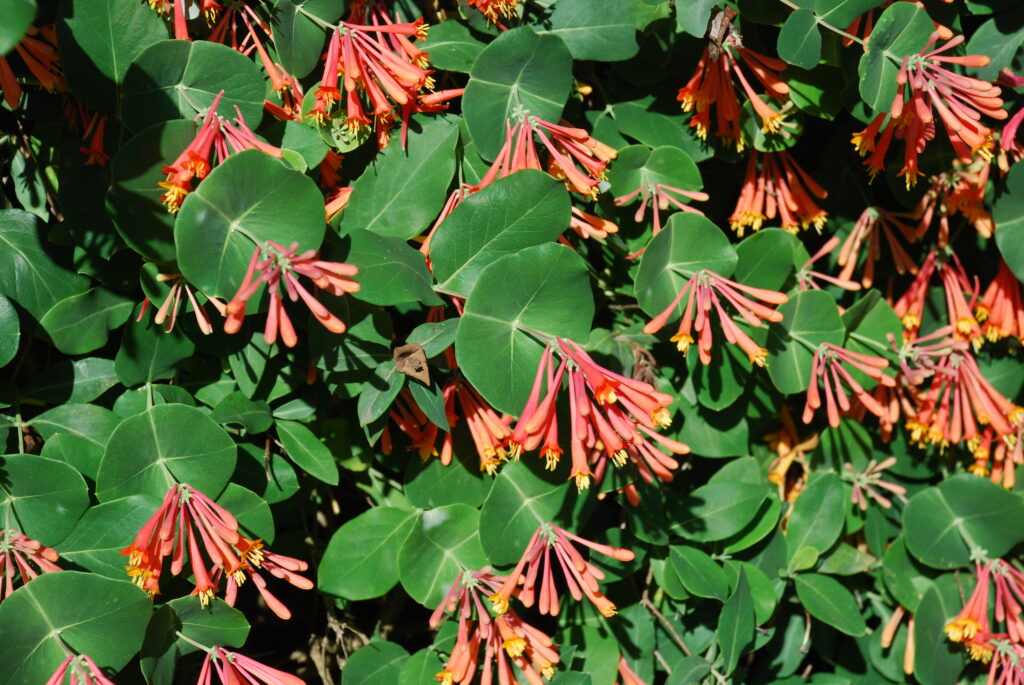
Trumpet or Coral Honeysuckle (Lonicera sempervirens) is a native twining vine in the Caprifoliaceae (honeysuckle) family. Flowers appear in mid-spring and is often non-fragrant. It is a nice addition to a butterfly, native, or pollinator garden. This vigorous vine is evergreen where winters are mild in the deep South. Recommend ‘Major Wheeler’ (scarlet crimson), ‘John Clayton’ (yellow-flowered), ‘Sulfurea’ (pure yellow). (Zones 4–8)
‘Betty Corning’ clematis (Clematis ‘Betty Corning’) exudes pure elegance. The sky blue/pinkish blooms curl slightly upwards at the petal tips, which makes one think of ballerina skirts in mid-twirl blue-violet bells. A sweet aroma accompanies them. Never denying a chance to soar, this clematis will eagerly climb anything it can attach its tendrils onto – lampposts, fences, and even other shrubs! Preferring overhead sunlight and cool shaded roots, mulching will keep Betty happy all season long. Zones 4-9
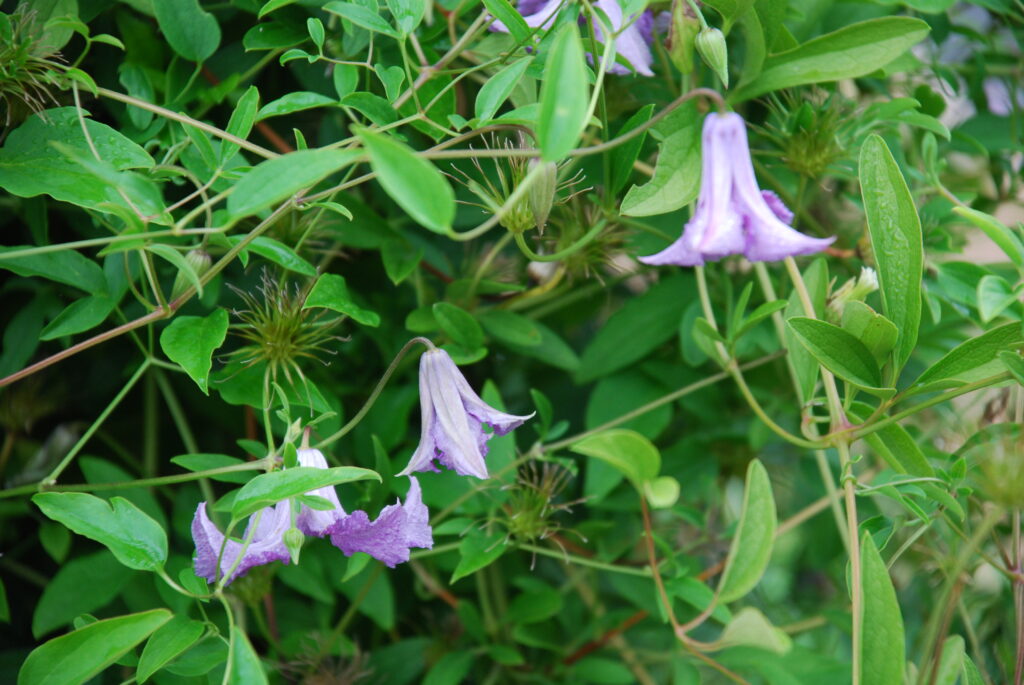
Crossvine (Bignonia capreolata) is a vigorous self-clinging native vine in the trumpet creeper (Bignoniaceae) family. The vine blooms in early spring on new wood in clusters of two to five flowers. Its early bloom season provides a nice stopping point for hummingbirds in the area. This tropical looking vine climbs by using tendrils vigorous, self-clinging vine easily attaches itself by tendrils to almost any surface, including nearby fences or trees. Vine has dark, glossy green leaves that take on a reddish-purple color in autumn. Leading cultivars: ‘Tangerine Beauty’. ‘Jekyll’. (Zones 5-9).
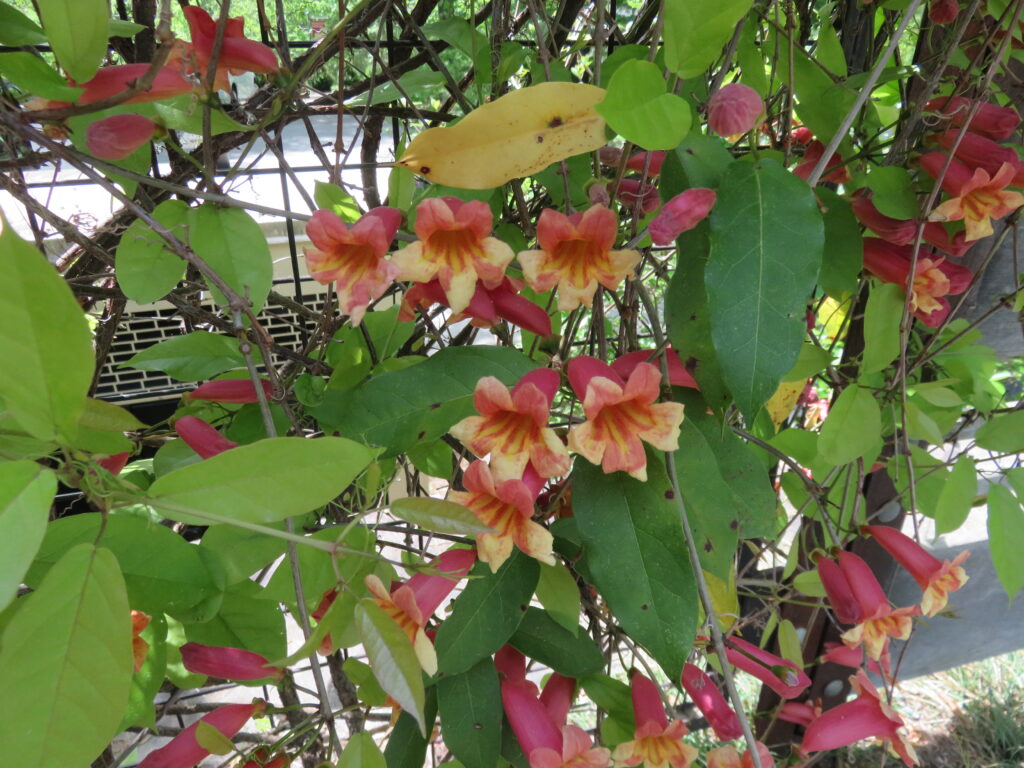
Clematis ‘Rooguchi’ (C. integrifolia x C. x durandii) is a non-vining, multi-stemmed, herbaceous perennial that grows with support to 6-8 feet tall and 3-4 feet spread. You can grow it as a rambling unsupported through the garden over shrubs and tree branches or tied to supports (trellis, arbor, tripod, fence) for vertical support. Solitary, nodding, violet to plum colored, bell-shaped 2 1/2” long flowers have 4 recurving sepals with recurving tips and light lavender margins. It is also sold as ‘Rouguchi’ or ‘Roguchi’. (Zones 4-8).
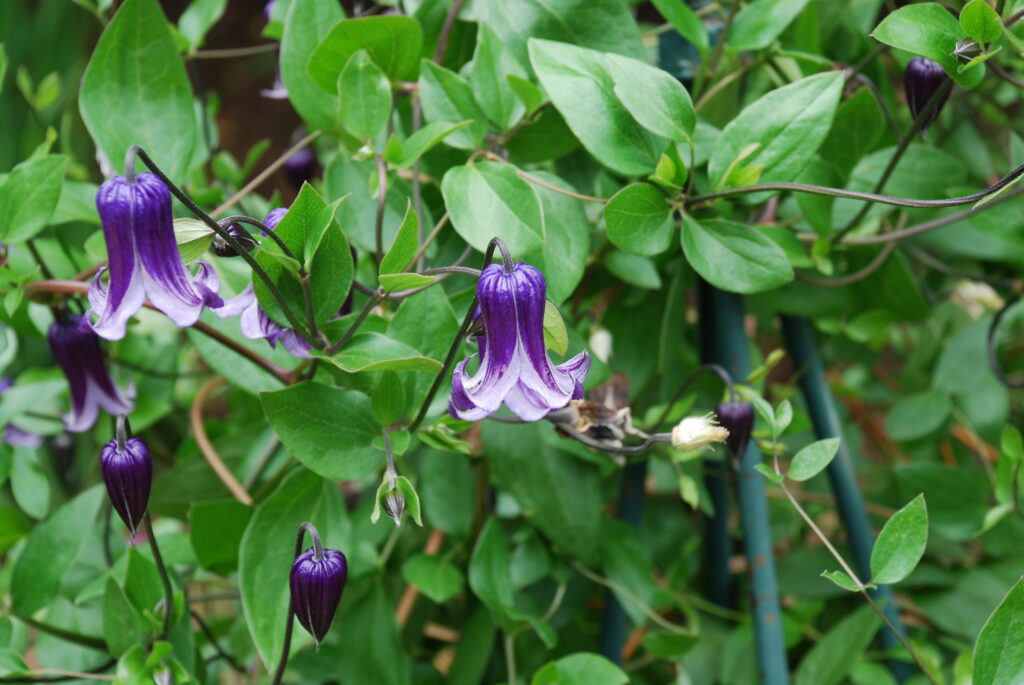
Pipevine (Aristolochia macrophylla), aka Dutchman’s pipe, is a perennial vine native to the eastern U.S. It prefers full sun to partial shade and rich, moist, and well-drained soil and resents dry soil. Grow in a sheltered area away from strong winds. Flowers are usually inconspicuous, mostly hidden within the vine’s dense foliage. The small blossoms are yellowish green with brownish-purple lobes in the shape of a smoking pipe. The leaves are smooth, heart-shaped, deep green, and silver-colored underneath. (USDA hardiness zones 4-8)
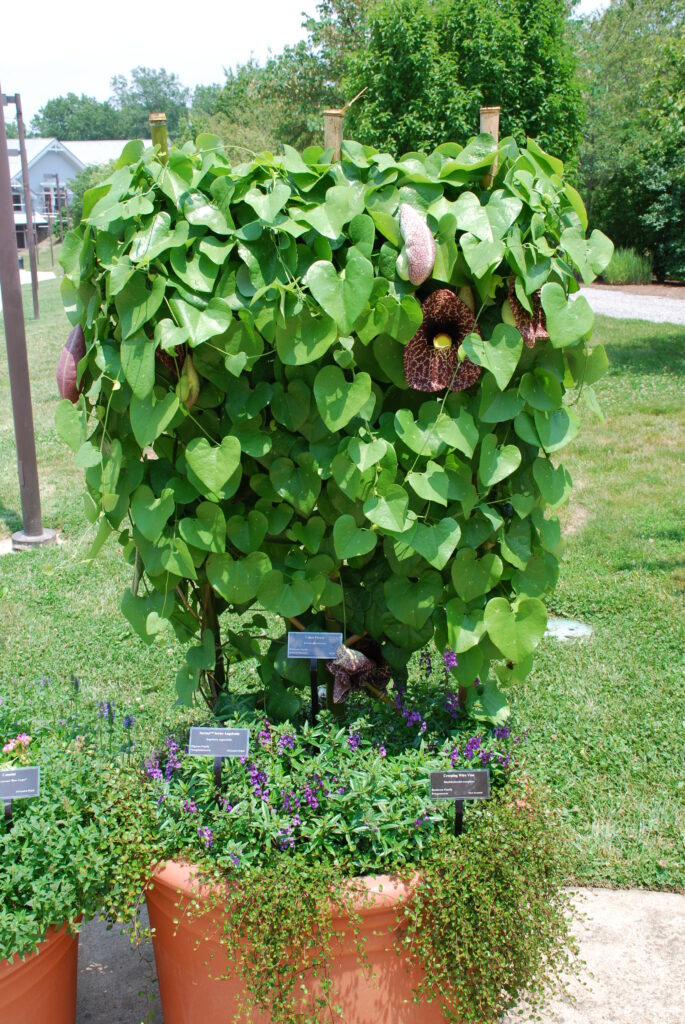

 Posted in
Posted in 
